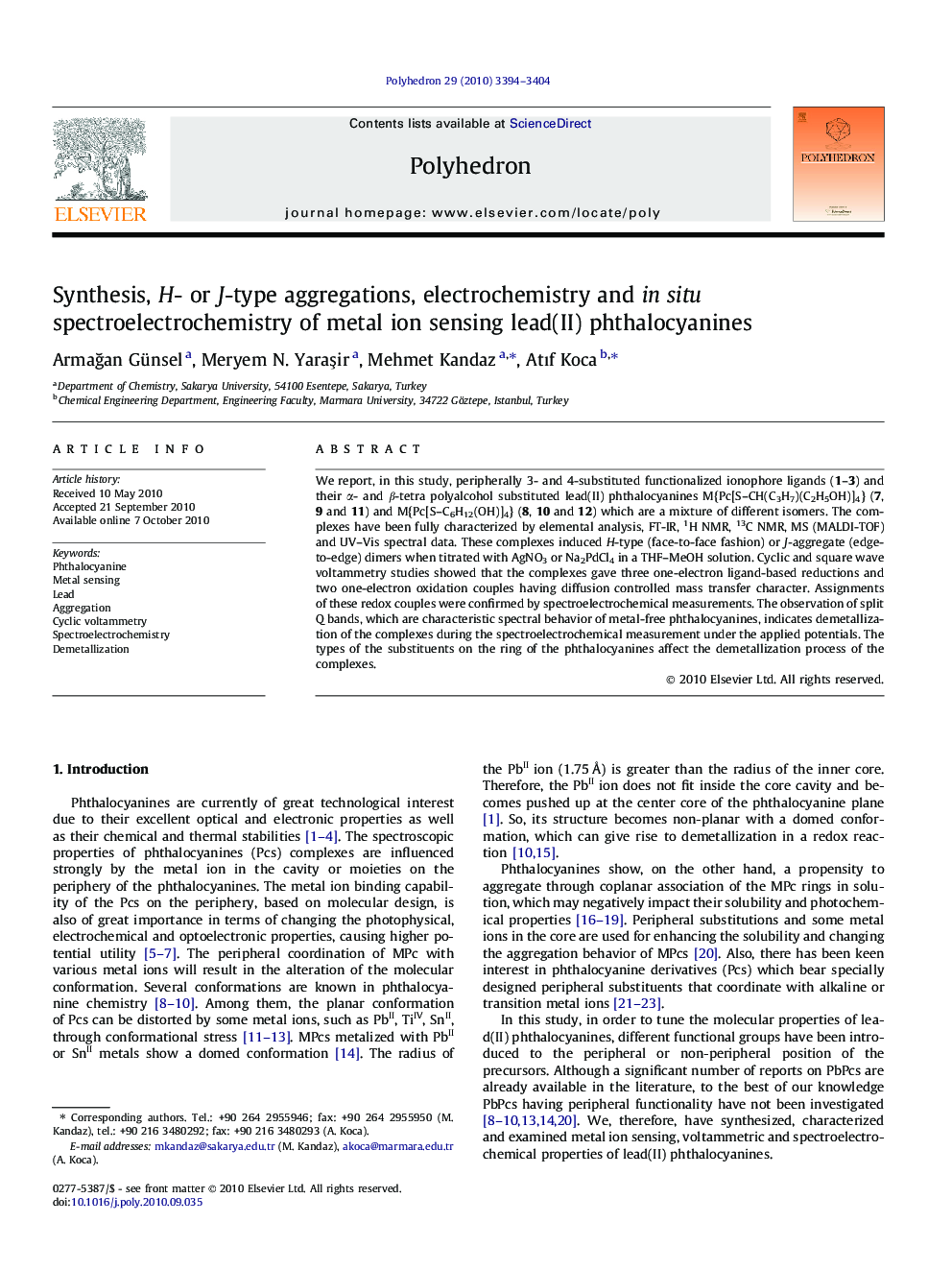| Article ID | Journal | Published Year | Pages | File Type |
|---|---|---|---|---|
| 1338712 | Polyhedron | 2010 | 11 Pages |
We report, in this study, peripherally 3- and 4-substituted functionalized ionophore ligands (1–3) and their α- and β-tetra polyalcohol substituted lead(II) phthalocyanines M{Pc[S–CH(C3H7)(C2H5OH)]4} (7, 9 and 11) and M{Pc[S–C6H12(OH)]4} (8, 10 and 12) which are a mixture of different isomers. The complexes have been fully characterized by elemental analysis, FT-IR, 1H NMR, 13C NMR, MS (MALDI-TOF) and UV–Vis spectral data. These complexes induced H-type (face-to-face fashion) or J-aggregate (edge-to-edge) dimers when titrated with AgNO3 or Na2PdCl4 in a THF–MeOH solution. Cyclic and square wave voltammetry studies showed that the complexes gave three one-electron ligand-based reductions and two one-electron oxidation couples having diffusion controlled mass transfer character. Assignments of these redox couples were confirmed by spectroelectrochemical measurements. The observation of split Q bands, which are characteristic spectral behavior of metal-free phthalocyanines, indicates demetallization of the complexes during the spectroelectrochemical measurement under the applied potentials. The types of the substituents on the ring of the phthalocyanines affect the demetallization process of the complexes.
Graphical abstractWe report, in this study, peripherally 3- and 4-functionalized ionophore ligands (1–3) and their α- and β-substituted metal (II) phthalocyanines M{Pc[S–CH(C3H7)(C2H5OH)]4} (7, 9 and 11) and M{Pc[S–C6H12(OH)]4} (8, 10 and 12) where M = PbII). The complexes have been fully characterized by elemental analysis, FT-IR, 1H NMR, 13C NMR, MS (MALDI-TOF) and UV–Vis spectral data. These complexes induced H-type (face-to-face fashion) or J-aggregate (edge-to-edge) dimers when titrated with AgNO3 or Na2PdCl4 in a THF–MeOH solution. Cyclic and square wave voltammetry studies showed that the complexes gave three one-electron ligand-based reductions and two one-electron oxidation couples having diffusion controlled mass transfer character.Figure optionsDownload full-size imageDownload as PowerPoint slide
